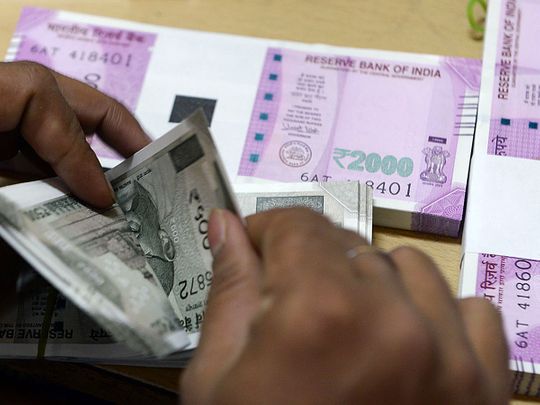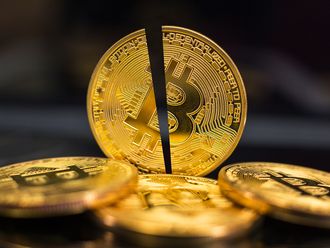
Dubai: Indian expats in the UAE have started getting 21 to the dirham for the first time ever. This comes after the rupee slipped past 21 early on Monday (May 9) after closing last Friday at 20.95 levels in inter-bank currency space.
“The Indian currency is getting its signals from the stock markets – and the signs are all in the negative,” said an official with an exchange house. “On the remittance side, we could see some heavy action, especially by corporate clients. There could also be some remittances by Indian expats - but many had already sent their monthly payments at the start of the month, when the rupee was around 20.80 levels."
So far, there is no sign of the India central bank, RBI, making an intervention in the market, said a Mumbai-based FX analyst. The Indian stock markets is very much in the red at the start of the week, with the benchmark Sensex slipping by 677 points (as of 9.45am IST).
According to Nagesh Prabhu, Deputy General Manager at LuLu International Exchange, “The rupee was expected to test a new low as it had tested a low on Friday itself. Today, it tested 77.52 against the USD, and we expect the rupee to fall further on account of geopolitical tensions and rising oil prices. We feel that it might move towards the 78 mark in the coming days." (In dirham terms, the rupee tested 21.10 and may test 21.20 in the coming days.)
While the Indian economy has shown signs of growth and recovery across the board - despite elevated input and labour costs and ongoing supply chain disruptions - inflationary pressures continue to loom as it is largely predicted to be about 7.5%, far beyond the central bank's tolerance band
Heavy fund outflow
According to Bloomberg, foreign funds pulled out $17.7 billion from Indian equities this year, the highest on record, as the prospect of aggressive tightening by global central banks roiled markets. The currency has also been buffeted by other headwinds including a widening current account deficit, and a surge in global crude prices. Even the Reserve Bank of India's out-of cycle rate increase last week hasn't been able to stem the rupee's decline.
"The RBI's recognition of the need for urgency in normalising policy is a source of support," BNP Paribas strategists Siddharth Mathur and Chidu Narayanan wrote in a note. "However, as equity flows can dominate interest-rate sensitive flows, there is a high downside risk to the INR from a deterioration in equity market sentiment as a result of a rapid tightening in domestic financial conditions."
USD/INR traded at all-time highs around 77.255 today and has fallen around 1.80% since the RBI’s (rate increase by 0.40%) last week. That does leave the RBI in somewhat of a bind, and it is an issue others around Asia will be feeling sooner, rather than later
RBI intervenes
India's central bank is intervening in all foreign-exchange markets and will continue to do so to protect the rupee that slid to a record low Monday, said a person familiar with the matter.
The Reserve Bank of India sees its foreign-currency reserves of about $600 billion as a formidable stockpile that it will put to use against speculators, the person said, asking not to be identified as the deliberations aren't public. The RBI is seeking an orderly depreciation, the person said.
"Interventions by RBI have been small and sporadic today," said Anil Kumar Bhansali, head of treasury at Finrex Treasury Advisors. The central bank has sufficient reserves, they could sell another $50 billion also, but they may prefer to keep those reserves for bad times, he said.
The rupee's sharp slide is unfounded because India's exports are robust and growth recovery is on track, the person said. That gives the RBI confidence that levels seen before the latest plunge are in line with fundamentals.
The RBI intervened in the spot, forwards and non-deliverable forwards market on Monday, the person said. The RBI sees pressure on the rupee from a weaker yuan and stronger dollar, rather than domestic reasons, the person said.
With inputs from Bloomberg








